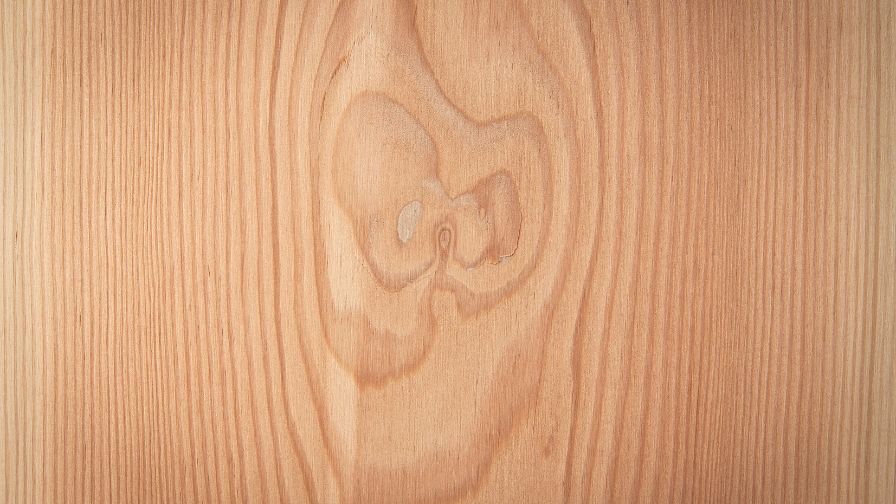
Douglas fir is a beautiful wood that is often used for outdoor projects. It is strong and weather resistant, making it the perfect choice for decks, fences, and other structures. If you want to ensure that your Douglas fir project lasts for many years, you will need to seal it properly. In this blog post, we will discuss how to seal Douglas fir for outdoor use. We will also provide tips on how to maintain your sealant so that your project looks great for years to come!
What Is Douglas Fir And Why Is It A Popular Choice For Outdoor Projects?
If you’re looking for a sturdy, durable wood for your next outdoor project, you may want to consider Douglas fir. Douglas fir is one of the most popular choices for decking, siding, and other construction projects because it is moderately durable regarding decay, but it is susceptible to insect attack.
Douglas fir grows in Western North America, and its scientific name is Pseudotsuga menziesii. The wood is orange-red to reddish brown in color and has a straight grain with a fine texture. It is also easy to work with, which makes it ideal for a variety of construction projects.
One of the main reasons Douglas fir is so popular for outdoor projects is that it is weather-resistant. The wood is naturally resistant to rot and decay, making it a good choice for decks, fences, and other structures that are exposed to the elements. Douglas fir can also be stained or painted to match your desired aesthetic.
Another reason Douglas fir is such a popular choice for outdoor projects is that it is relatively affordable. Compared to other types of wood. It is also easy to find, which makes it a convenient choice for many people.
Tips For Sealing Douglas Fir For Outdoor Use
Tip #1: Use A High-Quality Sealant
When you’re sealing Douglas fir for outdoor use, it’s important to choose a high-quality sealant. This will ensure that your project is protected from the elements and will last for many years. There are a variety of sealants on the market, so it’s important to do some research to find one that will meet your needs.
Tip #2: Apply The Sealant In Multiple Thin Coats
Another important tip for sealing Douglas fir for outdoor use is to apply the sealant in multiple thin coats. This will ensure that the wood is evenly sealed and that no areas are missed. It’s important to allow each coat of sealant to dry completely before applying the next one.
Tip #3: Use A Brush or Roller For Applying The Sealant
When you’re sealing Douglas fir for outdoor use, you can either use a brush or roller to apply the sealant. If you’re using a brush, be sure to choose one with soft bristles so that you don’t damage the wood. If you’re using a roller, be sure to use one with a long nap so that you can evenly apply the sealant.
Tip #4: Allow The Sealant To Dry Completely
After you’ve applied the sealant to the Douglas fir, it’s important to allow it to dry completely. This usually takes about 24 hours. Once it’s dry, you can then proceed with your project.
Sealing Douglas fir for outdoor use is a great way to protect your project from the elements. By following these tips, you can ensure that your project will last for many years.
Discover 1,000 Hours Of Step-By-Step Woodworking Videos

It’s called Woodwork101. A database of detailed videos and blueprints in crystal clear, mouth-watering HD that will take you by the hand and show you that DIY home projects done the right way are easy, fun, and always of top quality… turning a dream into reality in a heartbeat. Getting you that perfect build each and every time.
Here are some steps to keep in mind when sealing Douglas Fir for outdoor use:
1. Begin by sanding your Douglas fir down to bare wood using medium-grit sandpaper. This will help the sealer to better penetrate the wood.
2. Next, clean off any sawdust or debris from sanding using a vacuum cleaner or damp cloth.
3. Once the surface is clean, apply a liberal amount of sealer using a brush, roller, or sprayer. Be sure to work the sealer into all cracks and crevices.
4. Allow the sealer to dry for at least 24 hours before exposing the wood to moisture or weather.
5. For best results, reapply the sealer every few years as needed.
So there you have it! By following these simple tips, you can keep your Douglas fir looking great for years to come.
Is Douglas Fir Okay To Use Outside?
Subscribe to Matt Risinger
Yes, Douglas fir is an excellent wood for outdoor use. It is naturally rot-resistant and durable making it ideal for construction projects. Additionally, it is a beautiful wood that will add character and charm to your home. Douglas fir is easy to work with and takes stain and paint well so you can customize it to match your home’s style.
If you’re looking for high-quality wood for your next outdoor project, consider using Douglas fir. You won’t be disappointed with the results.
How Do I Protect My Douglas Fir Outside?
It’s pretty simple, really. Just give it a couple of coats of exterior-grade stain and it’ll be good to go. Coating it in a sealant will also help to protect it from the elements and extend its lifespan. Be sure to reapply the stain or sealant every few years as needed to keep your Douglas fir looking great for years to come.
How Do You Waterproof Douglas Fir?
There are a few different ways that you can waterproof your Douglas fir wood. One option is to use a sealer or stain specifically designed for outdoor use. This will help to protect the wood from moisture and weather damage.
Another option is to use a clear polyurethane coating. This will create a barrier between the wood and the elements, but it will not change the color of the wood. Whatever method you choose, be sure to reapply the waterproofing every few years as needed.
So there you have it! Now you know all about Douglas fir and how to protect it from the elements. Be sure to keep these tips in mind for your next outdoor project.
[Video] 3 Most Common Mistakes
When Setting Up Shop

A woodworking friend of mine shared this video by Ralph Chapman with me that helped him set up his workshop.
The video explains the benefits of Ralph Chapman’s guide about setting up an affordable workshop and avoiding the most common mistakes offers to anyone interested in woodworking.
Does Douglas Fir Need Staining?
Subscribe to Best on Internet
Yes, you should stain your Douglas Fir. This type of wood is known for being especially absorbent, so your stain will go on evenly and look great. Just make sure to follow the instructions on the can of stain carefully, and you’ll have beautiful stained Douglas Fir in no time.
What Is The Best Finish For Douglas Fir?
The best finish for Douglas Fir is a sealer or stain that is specifically designed for outdoor use. This will help to protect the wood from moisture and weather damage. Another option is to use a clear polyurethane coating. This will create a barrier between the wood and the elements, but it will not change the color of the wood. Whatever method you choose, be sure to reapply the finish every few years as needed.
What Are The Benefits Of Sealing Douglas Fir Properly?
If you have Douglas fir in your home, you know it’s a beautiful wood. But did you know that sealing it properly can bring out its natural luster and protect it from damage?
Sealing Douglas fir protects the wood from moisture, which can cause warping and cupping. It also helps to prevent staining and fading and makes cleanup after spills much easier.
When sealing Douglas fir, it’s important to use a product that will penetrate the wood and provide a long-lasting seal. A good quality gel stain is a great option, as it will not only protect the wood but also enhance its natural grain. For added protection, top the gel stain with a clear polyurethane coat. This will create a barrier against dirt, dust, and other airborne particles that can damage the wood over time.
Sealing your Douglas fir will not only extend its lifespan but also keep it looking beautiful for years to come. So if you’re looking for a way to protect your investment, sealing is the way to go.
How Can You Maintain Your Sealant So That Your Project Looks Great For Years To Come?
Subscribe to Maggie McGaugh
The key to maintaining your sealant and keeping your project looking great for years to come is proper care and cleaning. Here are some tips on how to keep your sealant in top condition:
- Wipe up any spills or stains immediately.
- Avoid using harsh chemicals or cleaners on your sealant. Stick to mild soaps and cleaners.
- When cleaning your sealant, use a soft cloth or sponge. Avoid using anything abrasive, as this can damage the sealant.
- Be sure to reseal your sealant every few years to keep it looking fresh and new.
With just a little bit of care and attention, your sealant will stay looking great for years to come!
[Guide] How To Launch Your Woodworking Business For Under $1000
Click Here To View
If you’re considering turning your woodworking hobby into a part-time business check out this helpful guide on how to get started.





